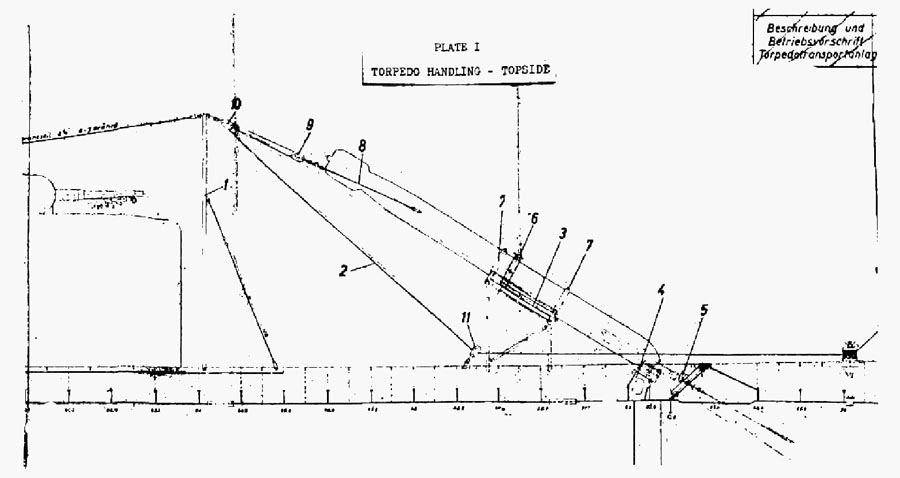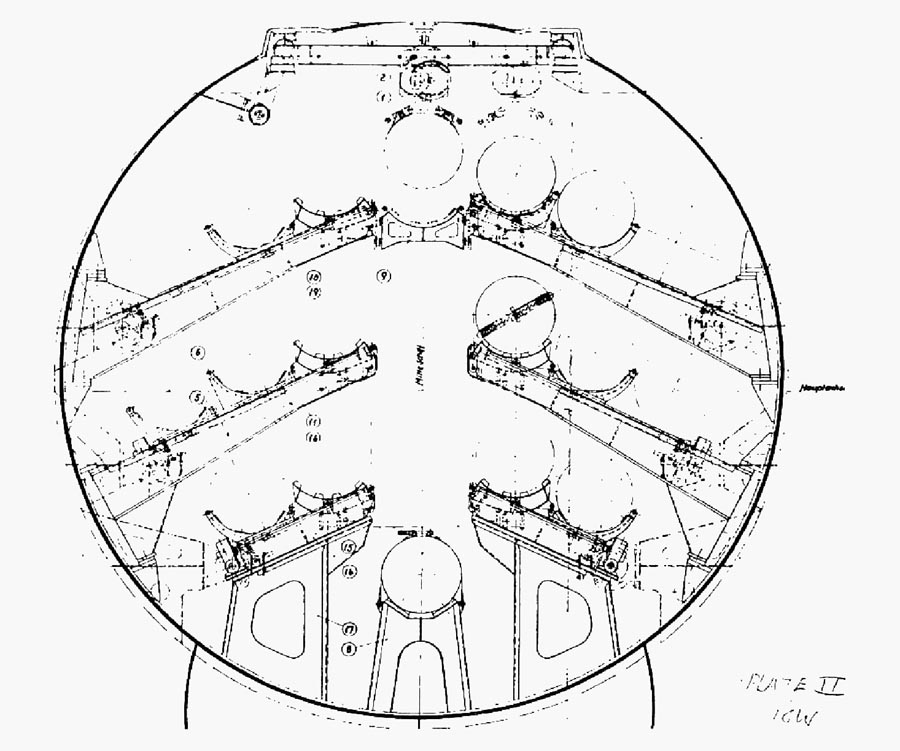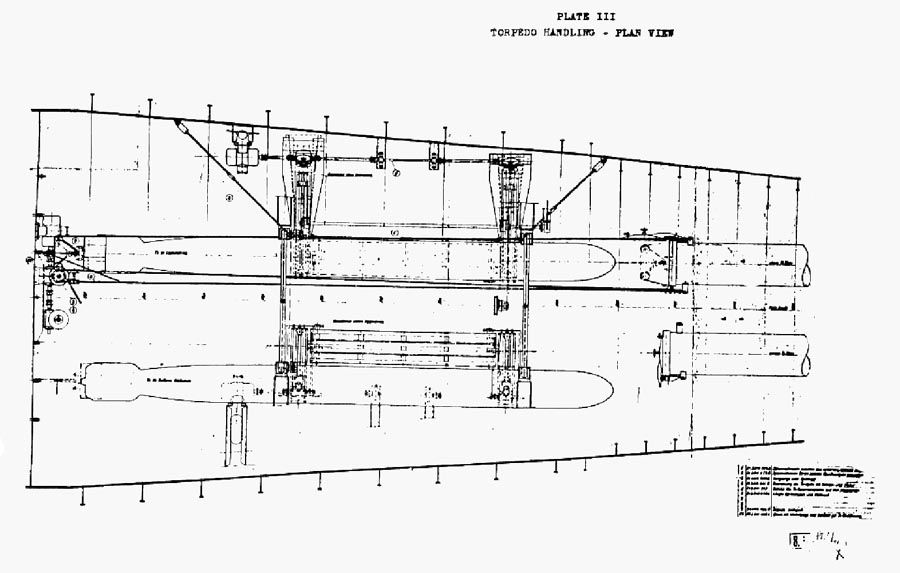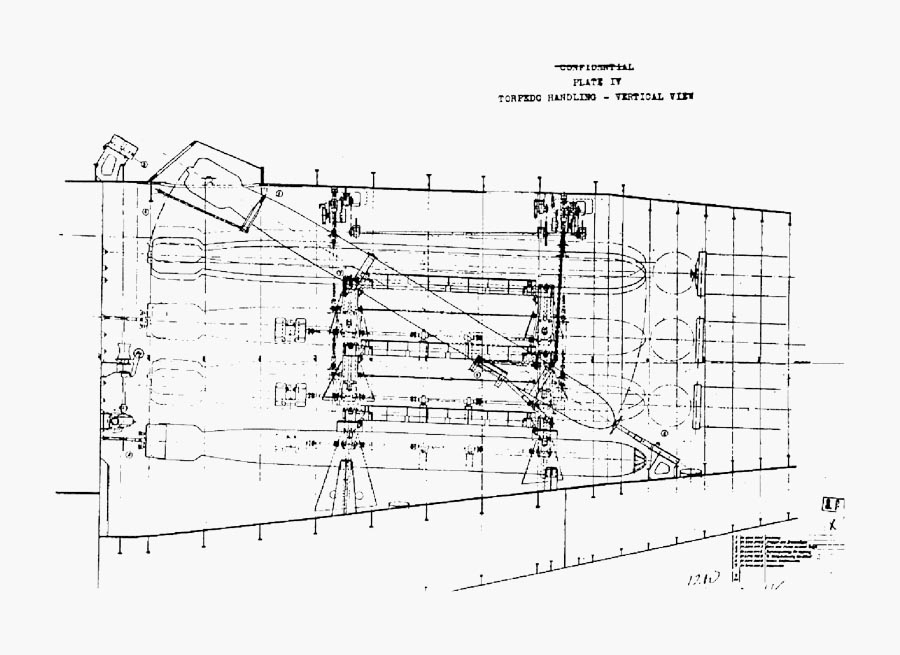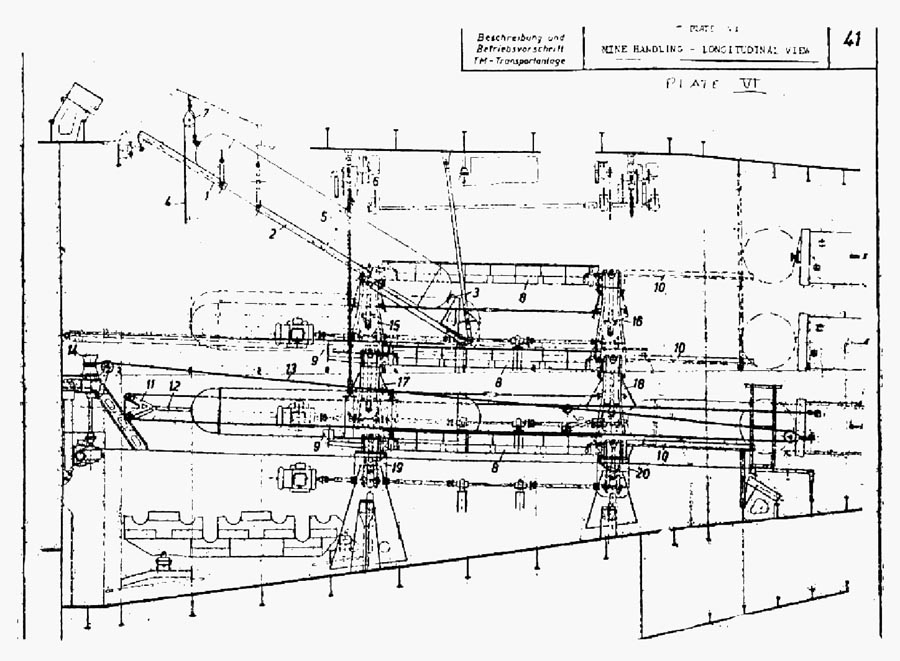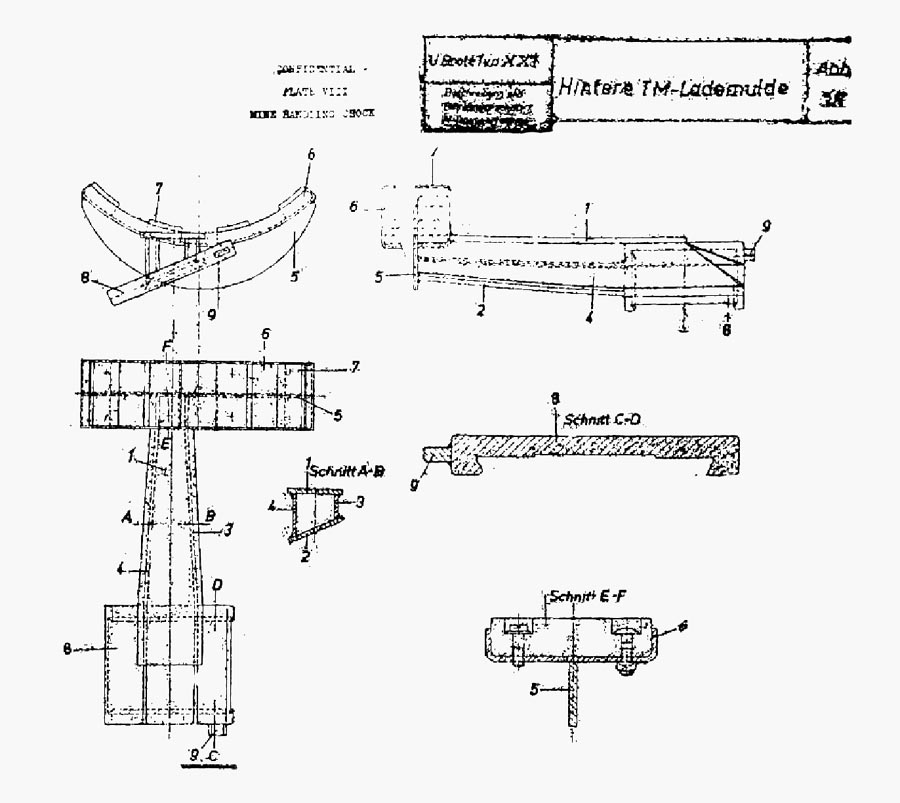|
|||||
FORMER GERMAN SUBMARINE TYPE XXI |
|||||
TORPEDO HANDLING, LOADING AND STOWAGE |
|||||
SUMMARY |
|||||
| Although several of the design details of the handling, loading and stowage arrangements from earlier German types were retained on the Type XXI, the basic conception, to provide stowage for all torpedoes within the torpedo room with a ready means for servicing the torpedo tubes, was an innovation in German design. | |||||
| The stowage and handling arrangements adopted provide an interesting comparison with present U.S. designs. Several noteworthy features, in particular, the elimination of heavy stowage cradles, warrant consideration for possible inclusion in U.S. designs. | |||||
February, 1946 |
|||||
PORTSMOUTH NAVAL SHIPYARD, PORTSMOUTH, N. H. |
|||||
- 1 - |
|||||
|
||||||||||||||||||
TABLE OF CONTENTS |
||||||||||||||||||
|
||||||||||||||||||
TABLE OF PLATES |
||||||||||||||||||
|
||||||||||||||||||
- 2 - |
||||||||||||||||||
|
|||||
TORPEDO HANDLING, LOADING AND STOWAGE |
|||||
| 1. INTRODUCTION | |||||
| This report will not go into detail on the design features where already fully covered in the NavTechMisEu Technical Report No. 311-45 on "Torpedo Handling and Storage on German Submarines". Likewise, the design features that are common to those on the preceding types of German submarines, and are discussed in the Report on the IX C (Report No. 2G-9C-745-3) will not be included. The main discussion will be devoted to those advantageous overall and individual features of the design that could possibly be adapted to U.S. submarines. | |||||
| 2. DESCRIPTION | |||||
| The basic hull design of the Type 21 submarine made it desirable to eliminate the topside stowage existing on the preceding types that were not designed primarily for high submerged speeds. Also as the requirement of a narrow cross section aft eliminated the possibility of after torpedo tubes, it became necessary to provide adequate stowage facilities for all reserve torpedoes in the forward torpedo room. The German design to obtain this is shown on Plates I-IV. The functioning of this arrangement with torpedoes is fully discussed in the NavTechreport. A limited number of mines can also be handled with this setup by the addition of the special supporting chocks shown on Plates VI and VII. 18 TMB mines (7.6 ft. long) or 12 TMC mines (11.2 ft. long) could be carried external to the tubes. When carrying mines but a third of the available space is utilized as only the inboard chocks (and cradles) are used. With the present U.S. designs the same cradles that are used for stowage of torpedoes can be used for the stowage of mines; a total of 16 mines (10 ft. long) forward and 12 mines aft are carried in the cradles. | |||||
| The present German design has proven faulty under depth charge tests in that the elastic bolts securing the supporting arms to the pressure hull have sheared off. | |||||
| This arrangement provided for a total of 20 torpedoes, 6 in the torpedo tubes and 14 in the stowage. Three cradles were left empty so as to permit servicing of the torpedoes in the tubes. See Plate V. | |||||
- 3 - |
|||||
|
|||||
| No berthing was installed within the torpedo room; adequate facilities for berthing the crew were provided within the large battery compartment. | |||||
| 3. NOTEWORTHY CHARACTERISTICS | |||||
| The basic arrangement providing reserve torpedoes on the same level as the tubes to be serviced with a ready means of athwartship movement of the torpedoes on their supporting members is the same on both U.S. and German designs. The German design utilizes power to move the torpedoes both athwartships on their support arms, and into the tubes longitudinally, while the U.S. designs depend on rollers and hand control for similar transport. The relative advantages and disadvantages of hand control versus power control essentially balance each other. | |||||
| The main advantage of the Type XXI arrangement lies in the overall weight saving by the use of chocks in lieu of cradles for the support of those torpedoes not lined up with the tubes. The cradles, less rollers, weigh 780 lbs. The chocks used weigh 75 lbs., or 150 lbs. for each torpedo, effecting a saving of 630 lbs. per torpedo. | |||||
| The conservation of weight by using chocks on rollers in lieu of cradles, and by reducing the number of cradles to one for each layer of tubes, could be easily accomplished on existing U.S. submarines, if desired. This would, at the same time alleviate the awkward handling and stowage problem that now presents itself with a large number of empty cradles. It is to be recognized, however, that in order to carry mines it becomes necessary either to use additional special fittings, as in the case of the German design, or to retain the present stowage cradles. | |||||
| 4. CONCLUSIONS | |||||
| The design adopted for the Type XXI submarine meets the German requirement to provide rapid, silent handling and maximum torpedo stowage facilities within the forward torpedo room. It does this at sacrifice in living accommodations (within this compartment) and overall mine stowage capacity. To properly assess a comparison of this arrangement, it would be necessary to know and discuss the effects that higher submerged speeds would have on the overall arrangement of a similar U.S. design. This is beyond the scope of this report. However, special noteworthy features present interesting studies for possible adaptation to and improvement of present U.S. designs. The lightweight chocks and cradles used are of particular interest. It is recommended that further study be made of an arrangement that uses light chocks in lieu of the present heavy stowage cradles so as to determine what sacrifices, if any, are necessary and what overall benefits are derived from such a change. | |||||
- 4 - |
|||||
